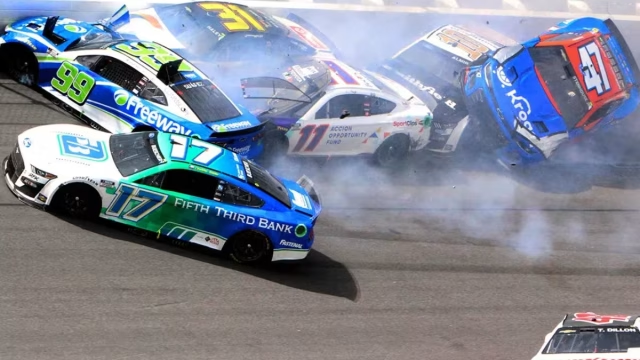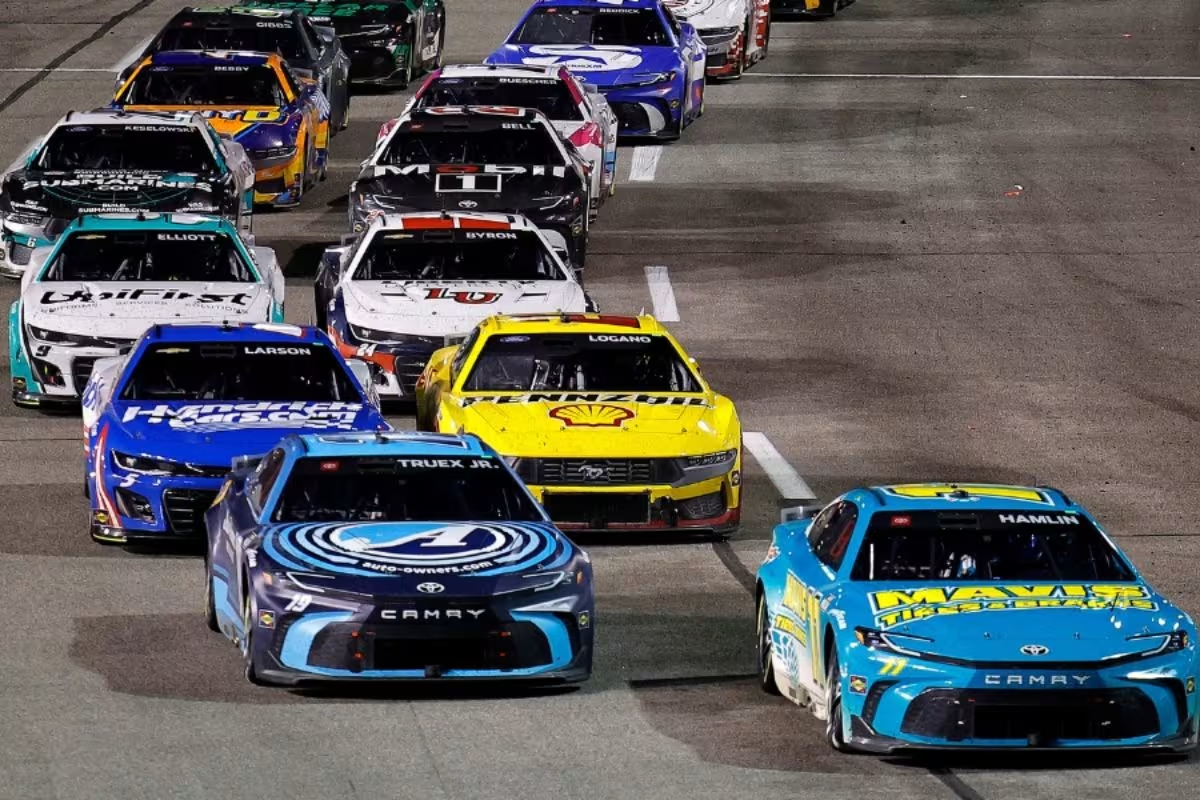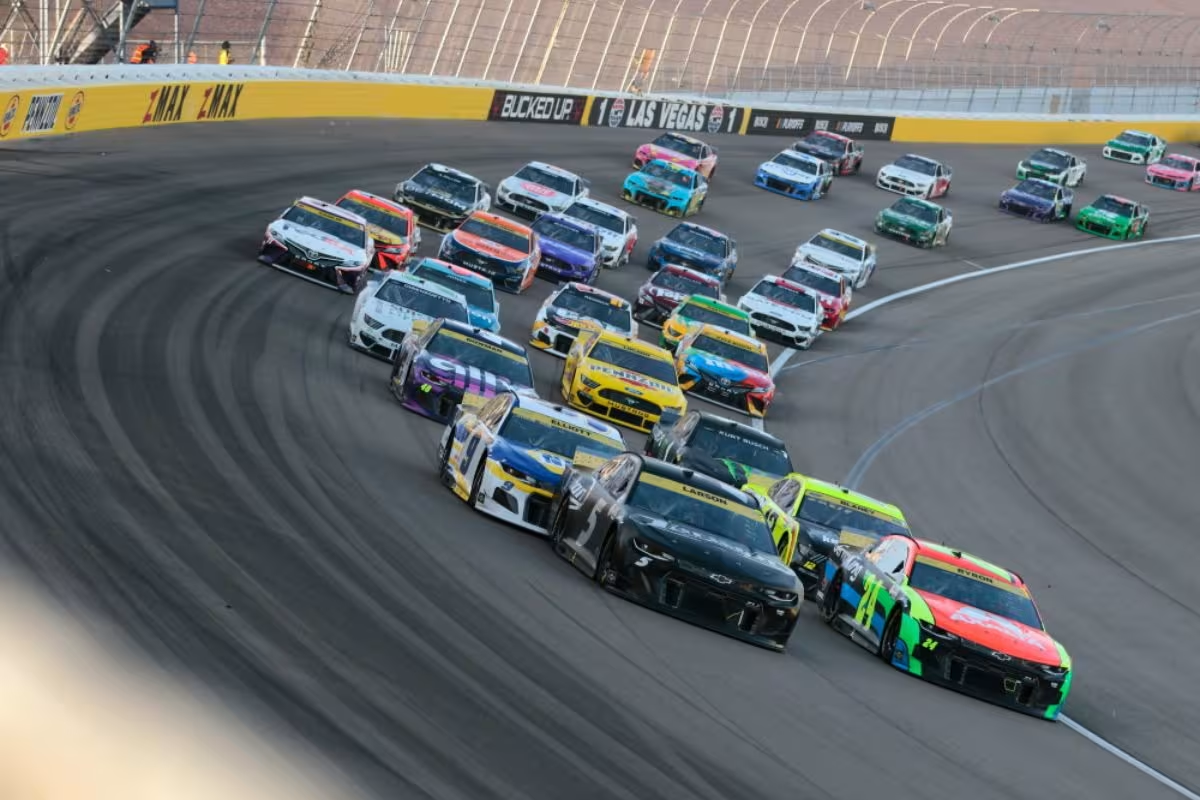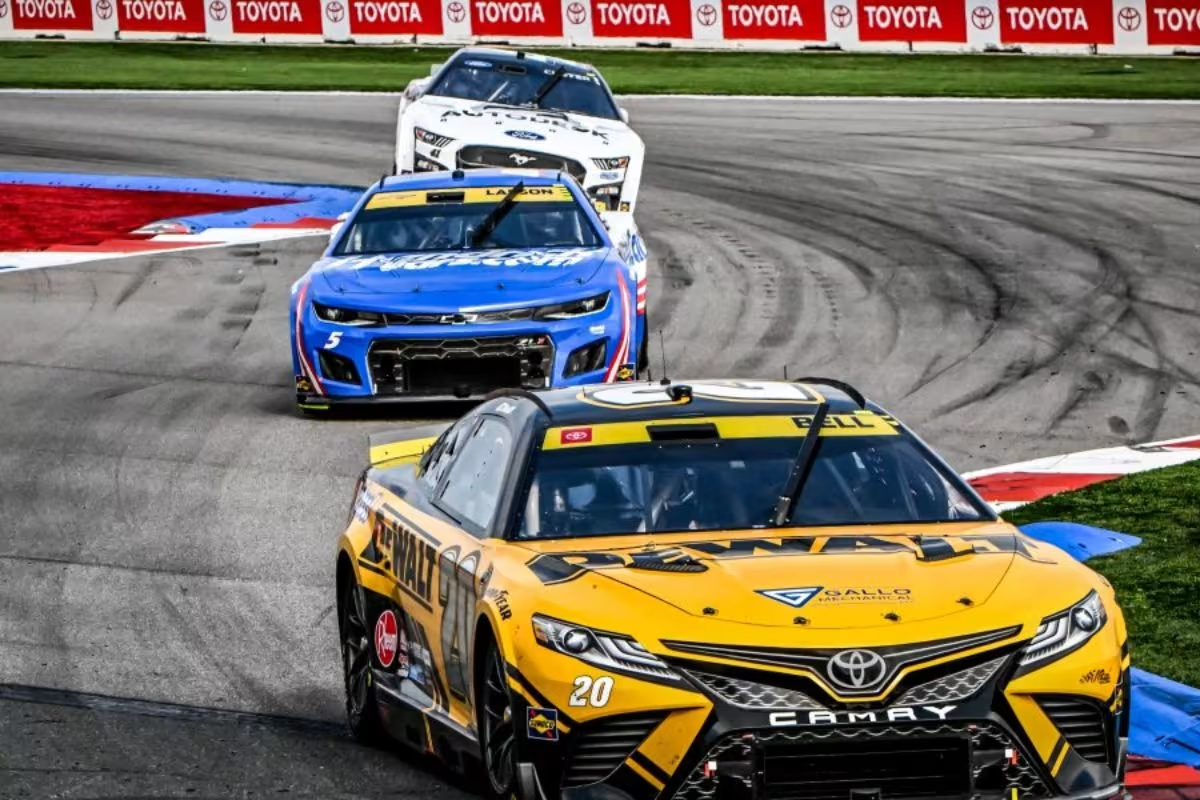NASCAR crushes F1 with record-breaking ratings as Joey Logano takes home a thrilling win at the South Point 400. NASCAR has once again outshined Formula One, leaving fans buzzing with excitement. What does this mean for both racing series? As the two compete for fans’ attention, the battle between NASCAR and F1 grows more intense.
Key Highlights
- NASCAR’s South Point 400 attracted 2.3 million viewers, significantly outpacing Formula One’s US Grand Prix, which had 1.3 million viewers.
- Joey Logano’s victory at the South Point 400 secured his spot in the NASCAR Championship, showcasing his tactical driving skills.
- Alex Bowman’s disqualification due to weight issues altered the race dynamics, emphasizing the importance of regulations in NASCAR.
- Formula One’s US Grand Prix was won by Charles Leclerc, but the event still fell short in viewership compared to NASCAR.
- The viewership disparity highlights NASCAR’s popularity in the U.S., while Formula One’s growth remains limited in comparison.
Clash of Motorsports: NASCAR and Formula One
The recent scheduling overlap between the NASCAR Cup Series playoffs and Formula One‘s United States Grand Prix has sparked a renewed discussion about the distinct characteristics and fanbases of these two premier motorsport series.
The simultaneous events at Las Vegas Motor Speedway and Circuit of the Americas in Austin, Texas, highlight the competitive landscape of motorsports in America, where both series vie for attention and loyalty from fans.
NASCAR, with its roots deeply embedded in American culture, emphasizes a unique blend of strategy, endurance, and thrilling close-quarter racing. The playoff format intensifies the stakes, drawing fans into a narrative of success and despair as drivers battle for the championship.
Conversely, Formula One is synonymous with cutting-edge technology, precision driving, and an international flair that attracts a diverse global audience. Its races display a high level of engineering sophistication, with teams investing millions to gain a competitive edge.
The differing approaches to racing manifest in the vehicles and the tracks and in the fan engagement strategies employed by both series. While NASCAR leans heavily on grassroots engagement and a festive atmosphere at its events, Formula One cultivates a more exclusive, glamorous image, appealing to an affluent demographic.
The clash between NASCAR and Formula One during this particular weekend serves as a microcosm of the broader motorsports landscape, prompting fans and analysts similarly to reflect on their preferences and the evolving dynamics of motorsport entertainment in the United States.
Viewership Comparison
Drawing attention from motorsport enthusiasts, the recent viewership figures reveal a remarkable disparity between NASCAR and Formula One broadcasts over the same weekend.
The South Point 400 playoff race, aired by NBC Sports, attracted an impressive 2.3 million viewers, nearly a million more than the 1.3 million viewers who tuned into ABC’s coverage of the Formula One US Grand Prix at Circuit of the Americas (COTA).
This striking contrast highlights NASCAR’s enduring popularity in the American sports landscape, even as Formula One continues to gain traction among U.S. audiences.
This notable difference in viewership reflects not only the deep-rooted culture of stock car racing in the United States but also the varying demographic appeals of both motorsport series.
NASCAR’s accessibility and widespread presence in American communities contribute to its strong fanbase, while Formula One, despite its growing buzz, remains a niche interest characterized by a global rather than regional following.
The figures reported by Sports Business Journal’s Adam Stern via X (formerly Twitter) highlight that while Formula One is making strides in expanding its American audience, it still faces formidable competition from NASCAR, which capitalizes on its established traditions and fan engagement strategies.
“@NBC got 2.3 million viewers for Sunday’s NASCAR race at Las Vegas, while @ABC got 1.3 million for the F1 race at COTA.”- Adam Stern
.@NBC got 2.3 million viewers for Sunday's NASCAR race at Las Vegas, while @ABC got 1.3 million for the F1 race at COTA. pic.twitter.com/ArPOFR8buY
— Adam Stern (@A_S12) October 22, 2024
Formula One US Grand Prix Recap
In a thrilling finale to the 2024 Formula One Pirelli United States Grand Prix, Scuderia Ferrari exhibited its dominance with Charles Leclerc claiming victory and Carlos Sainz securing a strong runner-up position.
This race, the 19th of the 2024 World Championship, followed a nearly month-long hiatus, and the Ferrari team capitalized on this opportunity to highlight their skill on the Circuit of the Americas.
Leclerc’s performance was nothing short of exemplary, as he navigated the track with a blend of precision and aggression. His ability to manage tire wear while maintaining a blistering pace proved vital in fending off challenges, particularly from his teammate Sainz, who showcased impressive racecraft in his final season with Ferrari before moving to Williams Racing.
Completing the podium was three-time reigning champion Max Verstappen. Despite his formidable reputation, Verstappen struggled to find his rhythm throughout the race, unable to match the pace set by the Ferrari duo.
His performance highlighted the challenges Red Bull Racing has faced this season, as they seek to regain their competitive edge.
As the F1 calendar moves forward, the United States Grand Prix will be remembered not only for Ferrari’s resurgence but also for the ongoing narrative of Verstappen’s quest to reclaim dominance.
NASCAR’s South Point 400 Highlights
As the excitement of the Formula One season unfolds, NASCAR captured the spotlight with the South Point 400 at Las Vegas Motor Speedway, marking a vital moment in the playoffs. The race served as the round of 8 opener, and its outcome considerably influenced the championship landscape.
Team Penske’s Joey Logano emerged victorious, claiming his spot in the Championship for an impressive sixth time, a record that emphasizes his skill in the sport.
Logano’s victory was not merely a product of talent; it was also shaped by the dramatic disqualification of HMS driver Alex Bowman. Bowman’s disqualification, a result of his 48 Ally Chevrolet failing to meet the weight requirement during post-race inspection, opened the door for Logano’s advancement.
Throughout the race, Logano exhibited both tactical insight and driving finesse, capitalizing on opportunities while managing the challenges posed by competitors and track conditions. His win at Las Vegas is representative of a seasoned driver leveraging experience to navigate the demands of high-stakes racing.
The South Point 400 not only highlighted the thrilling nature of NASCAR but also reinforced its popularity, drawing 2.3 million viewers and overshadowing its Formula One counterpart.
Legal Developments in NASCAR
Recently, legal tensions have escalated in NASCAR, particularly involving 23XI Racing, Front Row Motorsports (FRM), and NASCAR itself. At the center of this dispute is a fierce charter lawsuit that has prompted all parties to agree to redact sensitive financial information from previous charter agreements to protect existing business relationships.
The ongoing legal battle raises critical issues, including:
- Charter Agreements: NASCAR is urging charter-holding teams to sign a new agreement effective from 2025 to 2031.
- Antitrust Lawsuit: Both 23XI and FRM have filed an antitrust lawsuit, claiming a lack of fair bargaining opportunities in the new agreement.
- Confidentiality Concerns: NASCAR emphasizes that the documents contain highly sensitive financial information critical to their operations.
- Business Relationships: The effort to seal sensitive documents aims to protect the business interests of all parties involved.
- Media Coverage: The developments were reported by Sportsnaut journalist Matt Weaver, highlighting the ongoing nature of the dispute.
“NASCAR’s reasoning is that these documents ‘contain highly sensitive commercial financial information, such as revenue, rights agreements, and sponsorship agreements. Defendants would not share this highly sensitive financial information publicly and it should be sealed to avoid harming Defendant’s business and business relationships.” – matt Weaver
Not an unexpected 23XI, Front Row v NASCAR legal development but both parties have consented to redacting 'confidential' information from both the 2016 and 2025 charter documents in legal filings per the latest filing from the leaguehttps://t.co/vHDKwfcpch
— Matt Weaver (@MattWeaverRA) October 22, 2024
NASCAR’s insistence on confidentiality stems from the necessity to safeguard revenue rights and sponsorship agreements that could be jeopardized if disclosed.
As the legal proceedings unfold, the implications for the sport’s structural integrity and competitive landscape remain paramount. The outcome of this dispute could reshape the operational framework of NASCAR, influencing how teams negotiate and collaborate moving forward.
News in Brief: NASCAR Crushes F1 with Record-Breaking Ratings
The recent viewership figures emphasize NASCAR’s dominance over Formula One in the United States, with Joey Logano’s victory in Las Vegas attracting 2.3 million viewers. This striking contrast highlights the differing appeal of these motorsport events within the U.S. audience.
As both series continue to evolve, factors such as legal developments and race highlights will play crucial roles in shaping their respective futures and fan engagement strategies. The competition between NASCAR and Formula One remains an important narrative in motorsport culture.
ALSO READ: NASCAR’s Unseen Tactics to Create Rivalries Among Teams for Corporate Dominance



